
 |
The Heritage Park - Pitstone Green Museum
|
|||||||
| Home | Visit Us | Society | History | Explore | Tickets | News | Contact | |

We call this yard the Reception Yard as it is close to the original reception desk. This area is often used for our visiting Morris and Country Dancing displays. Being close to catering we have a small marquee to provide covered seating area.
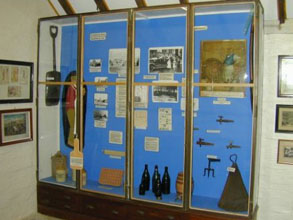
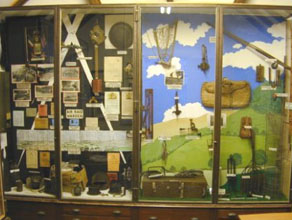
Until 1926 Ivinghoe was dominated by Roberts and Wilson's Brewery. The Brewery house later became a Youth Hostel for a number of years before being sold for redevelopment. One of the display cabinets is devoted to artifacts, photographs and other information relating to the brewery.
Like many villages, the two world wars featured very much in their history. There were active Home Guards in both Ivinghoe and Pitstone. They would watch the skies for enemy aircraft from Pitstone Hill and from the top of the Pitstone Cement works silos.
The second large display cabinet covers both the first and second world war together with items relating to sports and pastimes. The walls are covered with many interesting pictures and posters.
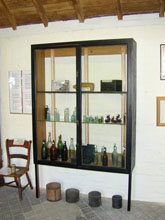
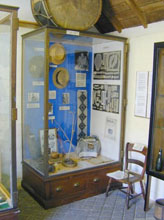
The second Microcosm room contains a wealth of interesting historical items that would be found in the district around Ivinghoe and Pitstone. One hundred years ago Ivinghoe was a town of about 1000 people while Pitstone was a small farming community of about 400.
Ivinghoe had a market every week mostly devoted to selling straw plait to Luton dealers in the hat trade. The wages for this mostly women's work had supplemented and sometimes even bettered those earned by the agricultural labourers in the area. Some lace was also still worked. Both industries were fast being replaced by cheap foreign imports in 1900. One of the display cabinets is devoted to lace/lace making and straw plait.
Other exhibits include :- Domestic items, toys, a collection of old bottles and many items donated to the museum by local residents and restored by the museum volunteers.
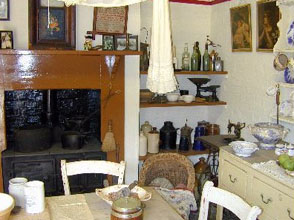
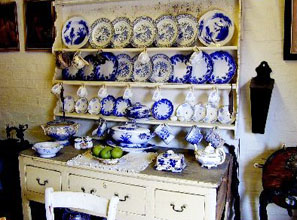
The kitchen can be considered as the workshop of the cottage or farmhouse. This room is furnished mostly by items from the house of Garnett Williamson, a builder of Pitstone. He built two houses in Cheddington Road, near the Railway Bridge, and lived in one of them at the turn of the last century. His taste reflects his time, particularly the blue 'every day' china on the dresser. The black-leaded range provided the only heating available, as well as the source of hot water, the oven for cooking or baking, a method of heating the flat iron for ironing and warmth for drying or airing the clothes on the clothes horse. Lighting was by oil lamps until electricity arrived on the scene. Gas was not normally available, unless the property was close to a town or large village. Mains water and the mains sewer did not come to Pitstone until 1946 so wells, either inside or just outside houses were common and dirty water flowed into the stream that runs through the centre of the village.

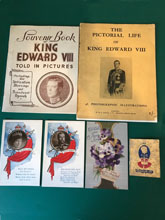
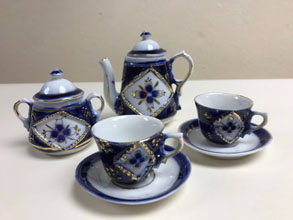
Ivinghoe and Pitstone are typical Buckinghamshire villages in many ways but they also have something unique about them. For the first half of the 20th century, Mrs Roberts, the wife of the Brewery owner dominated Ivinghoe. She organised everything from the WI to the Amateur Operatic group. Pitstone was included in these activities on sufferance. Their pride was in the cricket team and the quality of the allotments.
Most people worked as farm labourers and Pitstone Green Farm was an important employer. Extra money was earned 'in season' by fruit picking. The local plum, often known as the Aylesbury Prune, was a very popular fruit up to the Second World War and fruit was sent to all the big cities by railway and by road carrier.
From the 1930's till recently, life in both villages was dominated by the cement works, run for many years by The Tunnel Portland Cement Co Ltd, (known locally as Tunnel Cement ) which gave work over the years to many local people. Life became a constant battle with dust on windows and cars but still there was some sadness when the chimneys came down and the villages returned to a more rural atmosphere in the year 2000.
The Pitstone and Ivinghoe Museum Society has a large collection of photographs of early farming and village life in its archives, these being available to researchers and individuals having an interest in the locality. Many of these are shown in this room with a collection of garments from earlier years. The picture shows one page of a rather beautiful postcard album dating from the early years of the 20th century.
On normal open days our catering section provides a selection of hot paninis, various rolls, cakes and hot & cold drinks.
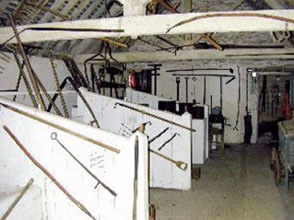
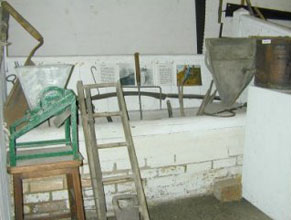
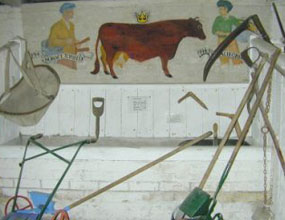
Cows were kept on the farm until the middle of the 1900's when pigs took over all of the farm buildings. Cows were part of the aim to be self-sufficient,which was important to the Hawkins family. Pedigree Lincoln reds were milked in this building, two to a stall. In bad weather they lived in the yard outside. Food for them was grown on the farm and their dung was taken out to fertilise the fields.
The room now has a collection of farming artefacts that shows how much on the farm went into growing crops to feed the animals, as well as to make a profit for the farmer. Drilling, weeding and harvesting both root crops and grain were hard labour intensive activities, and once the harvest was over, hedging and ditching made the fields safe for the animals to graze.